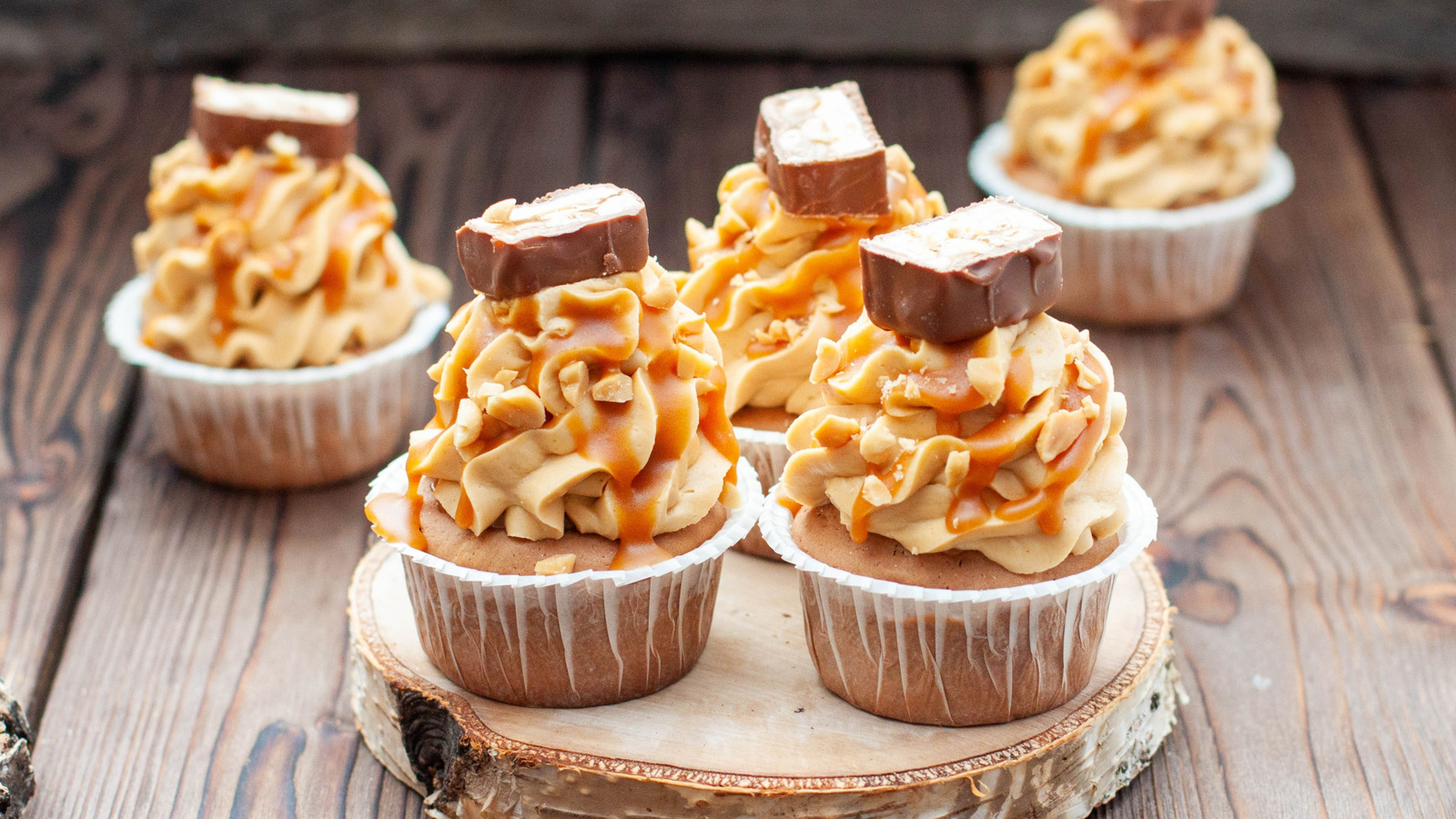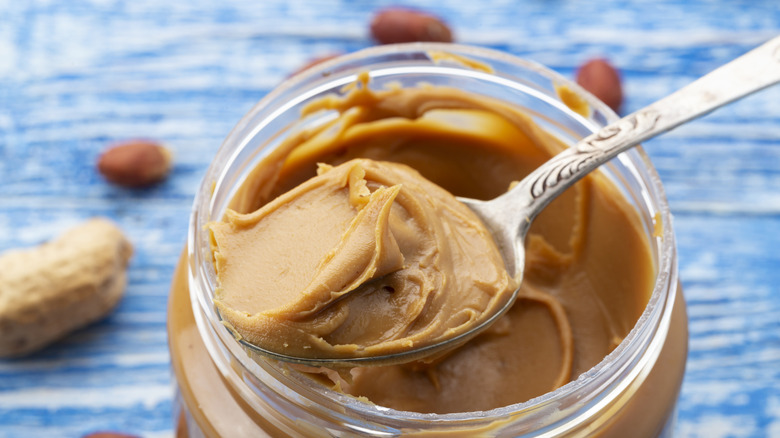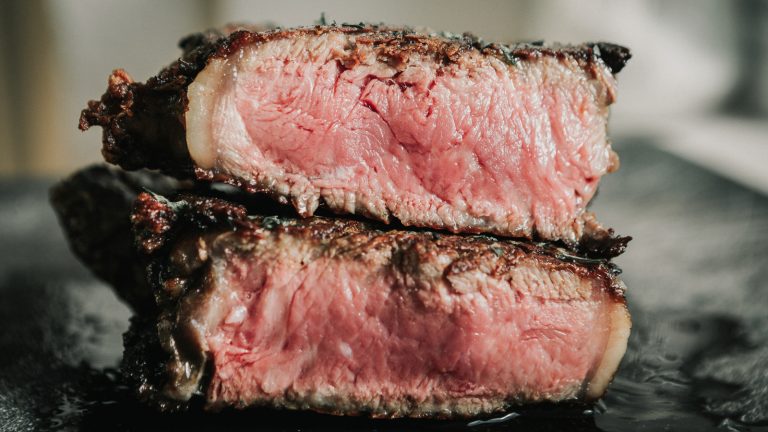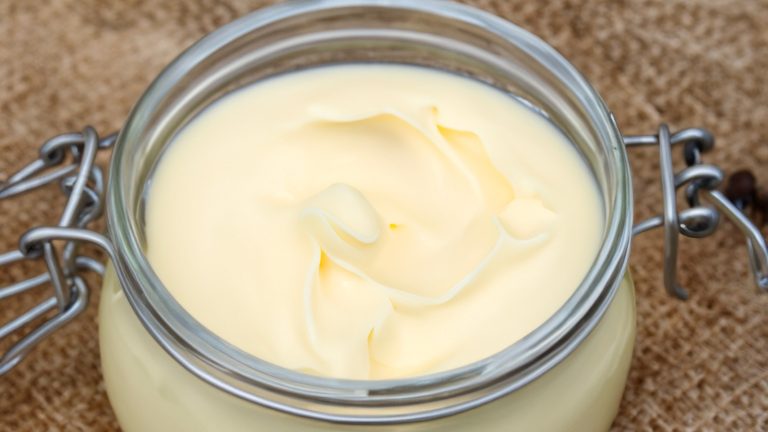When it comes to frosting, peanut butter is something of a dark horse. It’s often overlooked in favor of classics like chocolate and vanilla or more exciting flavors like tangy lemon or visually striking ube. However, this unsung frosting flavor deserves more love. Peanut butter pairs deliciously with many cakes, from the expected chocolate to more tropical flavors like banana, coconut, and even mango. Plus, the fat in peanut butter helps ensure a dense, rich frosting that’s as tasty on its own as it is on a cake.
However, when putting your peanut butter frosting together, there’s a very specific fail you’ll want to avoid at all costs: choosing the wrong kind of peanut butter. Aside from choosing the best-tasting brand of peanut butter available, you’ll also want to stick with the smooth varieties. Crunchy peanut butter may be the pièce de résistance in homemade bakery-style peanut butter cookies, but it’s a huge no-no when it comes to piped frosting. Instead of adding an interesting texture to your dessert, the crushed peanut pieces will just clog up your piping tip.
Natural peanut butter is also a poor choice, as it’s too heavy and oily to produce a fluffy, texture. Instead, you’re likely to get a grainy frosting that’s too thick to pipe properly and too soft to hold its shape. Smooth, partially hydrogenated peanut butter is your best bet, as it’s velvety, emulsified texture whips perfectly into the right consistency pretty much every time.
Tips for piping perfect peanut butter frosting
The basic ingredients for making peanut butter frosting are pretty simple: peanut butter (of course), butter, powdered sugar, and a spoonful or two of either milk or cream. You can also elevate the flavor a bit with a teaspoon of vanilla extract or a pinch of ground cinnamon. Since peanut butter is already fairly salty, most recipes recommend using unsalted butter to prevent the final product from tasting too savory.
Ideally, your butter should also be room temperature to achieve the right consistency. Cold butter is more likely to break up into bits rather than whip smoothly together with the other ingredients, creating a lumpy result. You can fix this by continuing to mix until the butter is fully incorporated, but this runs the risk of your frosting becoming too stiff to pipe easily, requiring you to thin it with a splash of milk — and just a little too much could make it runny.
If this happens, stabilizing your frosting with instant Jell-O rather than extra powdered sugar helps keep it from becoming overly sweet. Additionally, if your dessert needs a touch of texture, don’t be afraid to sprinkle crushed roasted peanuts over your frosting after piping it. This adds the texture of crunchy peanut butter without sacrificing the integrity of your frosting or ruining your favorite piping tip. It also gives your desserts an inviting, rustic appearance that’s perfect for a warm weather cookout or casual celebration.






